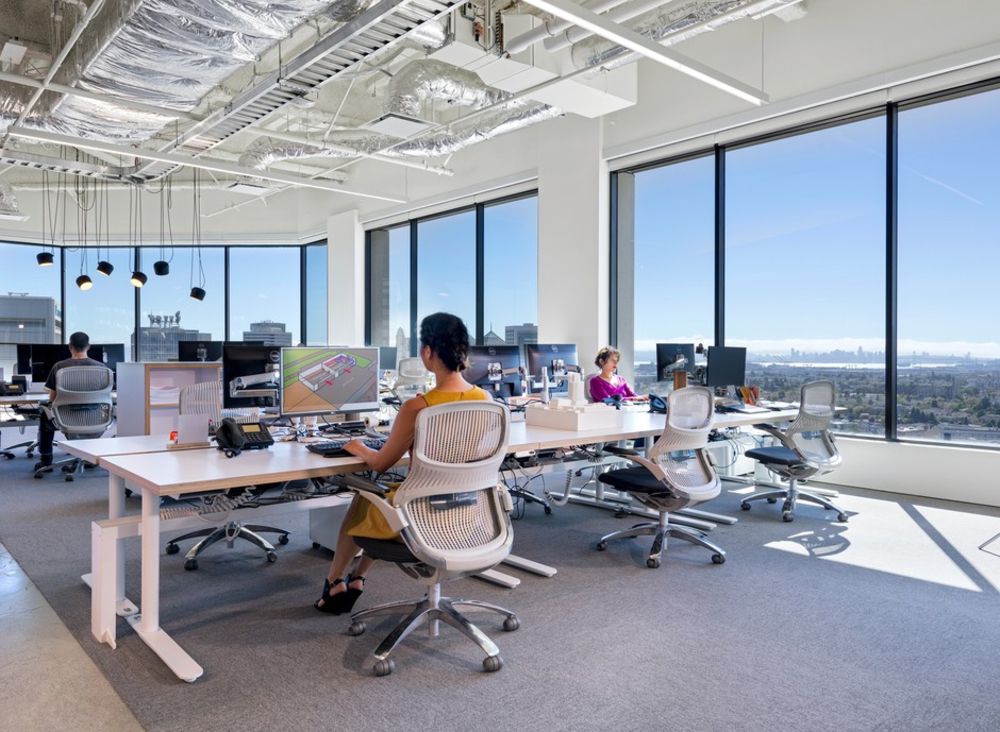Each year, the corporate office setting continues to evolve. The standard office interior design has significantly improved from the traditional desk and chair in a confined room, to vibrant open office designs, with large glass windows and ergonomic furniture. With the ongoing global pandemic, it has also permanently changed some of the space planning style for corporate offices. Thanks to the continuous evolution of work offices, many companies now ensure that their interiors inspire both employees and their clients.

Your office interior design can affect how your employees perceive their work environment; many company owners consider office design to be one of the key elements for their business success. As an example, the more convenient, welcoming, and efficient your office interior design is, the more likely your clients will feel comfortable there. The same goes for employees; working in an efficient and beautiful office can help to improve their emotional and physical health, leading to improved productivity and a more positive work attitude. We have put together some useful tips for you in planning your dream workplace.
1. Plan to Maximize Space
Planning your office space is not only about décor, but also about providing enough coverage for your employees, office supplies, furniture, and clients. The more spacious your office is, the more organized it will look; a spacious office allows you to have separate areas for your employees, management and even recreation. An organized office space can also encourage an efficient workflow. When employees have enough room to complete their tasks, it can boost their productivity. Make sure your office desks, tables, and office chairs are arranged evenly throughout the space to give each employee the space they need for themselves and their office supplies.
2. Let Natural Light In

Lighting plays an essential role in achieving an efficient and appealing interior office design. The best lighting you can use for your office is natural light, thus, it’s vital that you make smart choices for your office blinds. Some blinds tend to limit your access to natural light, while others, such as semitransparent blinds, can maximize natural light usage by letting more in. The more daylight exposure you can provide in your office, the more chances it will increase your employees’ productivity. Daylight has been known to boost people’s mood, helping them to have a positive work attitude, and using natural light can also enhance your office interior design, making it livelier and more welcoming.
3. Incorporate Your Company’s Identity

Now that you’ve planned out your office layout and how you’re going to maximize the natural light, it’s time to think of ideas for designing your office’s theme and decor. The first thing you need to consider before settling on a design concept is your company’s identity, ask yourself how you want people to perceive your office when they first step inside. If your company is related to the fashion industry, it may be best to plan your office interiors to include recognizable elements of this. You can use colorful walls, prints, and accented furniture to convey that this office is all about fashion and make a statement through styles and colors. Meanwhile, if your company is in line with the law, finance, or trading industries, it may be best if your office design is more formal and used muted tones to make sure that it conveys a serious and trustworthy business image.
4. Invest In Good Furniture

In designing your office interior, don’t forget to consider your employees’ well-being, the best way to do this is by investing in good quality furniture. Generally, people working in offices spend around eight hours per day sitting at their desks, it’s very common for office workers to complain about back and neck pains due to this, if their workstations are not designed effectively. The best way to prevent injury and strain on your employees is to provide them comfortable and ergonomic chairs and desks to support their body and reduce eye strain. Not only will the right furniture help them work comfortably, it could also have a big impact on their productivity.
5. Choose Colors Wisely
Your chosen colors can significantly impact how people feel in the office setting, so it’s essential that you choose them wisely. One way to choose the right colors is by using color psychology. Some studies have shown that colors may have the power to affect people’s mood, for instance, if you use blue for your office walls, it can convey a calming and peaceful vibe for the employees and clients. By contrast, if you choose to use red on your walls, it can give out an energetic vibe. Do your research and make sure you pick colors that align with your brand, while projecting the kind of energy you want in your office.
6. Create Collaborative Spaces
It’s common for offices to host corporate meetings and client collaborations, when designing your office, make sure you set aside an area intended for these types of gatherings. An office interior designer can help you create an innovative layout that can maximize the floor space available to you, without feeling cramped. Moreover, you can optimize your company layout structure by creating a multipurpose area, aside from being a meeting room, you can also use this for events and other company functions. When planning the décor for a multipurpose area, consider including round meeting tables, cork board panels, whiteboards, and other materials required for business meetings or presentations.
7. Office Interior Design Takeaways

Traditional office interior design has come a long way from dim cubicles, to more flexible office spaces that cater for efficiency, convenience and design.
Don’t forget to incorporate these tips mentioned above, to help you create an appealing and efficient interior office design that both your employees and clients will love.
*extracted from online resources
